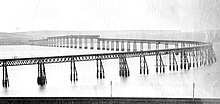Chapter 1 – Engineering
Engineering Ethics – Introduction and a brief history
https://en.wikipedia.org/wiki/Engineering_ethics
Engineering ethics is the field of applied ethics and system of moral principles that apply to the practice of engineering. The field examines and sets the obligations by engineers to society, to their clients, and to the profession. As a scholarly discipline, it is closely related to subjects such as the philosophy of science, the philosophy of engineering, and the ethics of technology.
The 18 th century and growing concern
The first Tay Bridge collapsed in 1879. At least sixty were killed.
As engineering rose as a distinct profession during the 19th century, engineers saw themselves as either independent professional practitioners or technical employees of large enterprises. There was considerable tension between the two sides as large industrial employers fought to maintain control of their employees.[1]
In the United States growing professionalism gave rise to the development of four founding engineering societies: The American Society of Civil Engineers (ASCE) (1851), the American Institute of Electrical Engineers (AIEE) (1884),[2] the American Society of Mechanical Engineers (ASME) (1880), and the American Institute of Mining Engineers (AIME) (1871).[3]ASCE and AIEE were more closely identified with the engineer as learned professional, where ASME, to an extent, and AIME almost entirely, identified with the view that the engineer is a technical employee.[4]
Even so, at that time ethics was viewed as a personal rather than a broad professional concern.[5][6]:6
Turning of the 20th century and turning point
The Boston molasses disaster provided a strong impetus for the establishment of professional licensing and codes of ethics in the United States.
When the 19th century drew to a close and the 20th century began, there had been series of significant structural failures, including some spectacular bridge failures, notably the Ashtabula River Railroad Disaster (1876), Tay Bridge Disaster(1879), and the Quebec Bridge collapse (1907). These had a profound effect on engineers and forced the profession to confront shortcomings in technical and construction practice, as well as ethical standards.[7]


